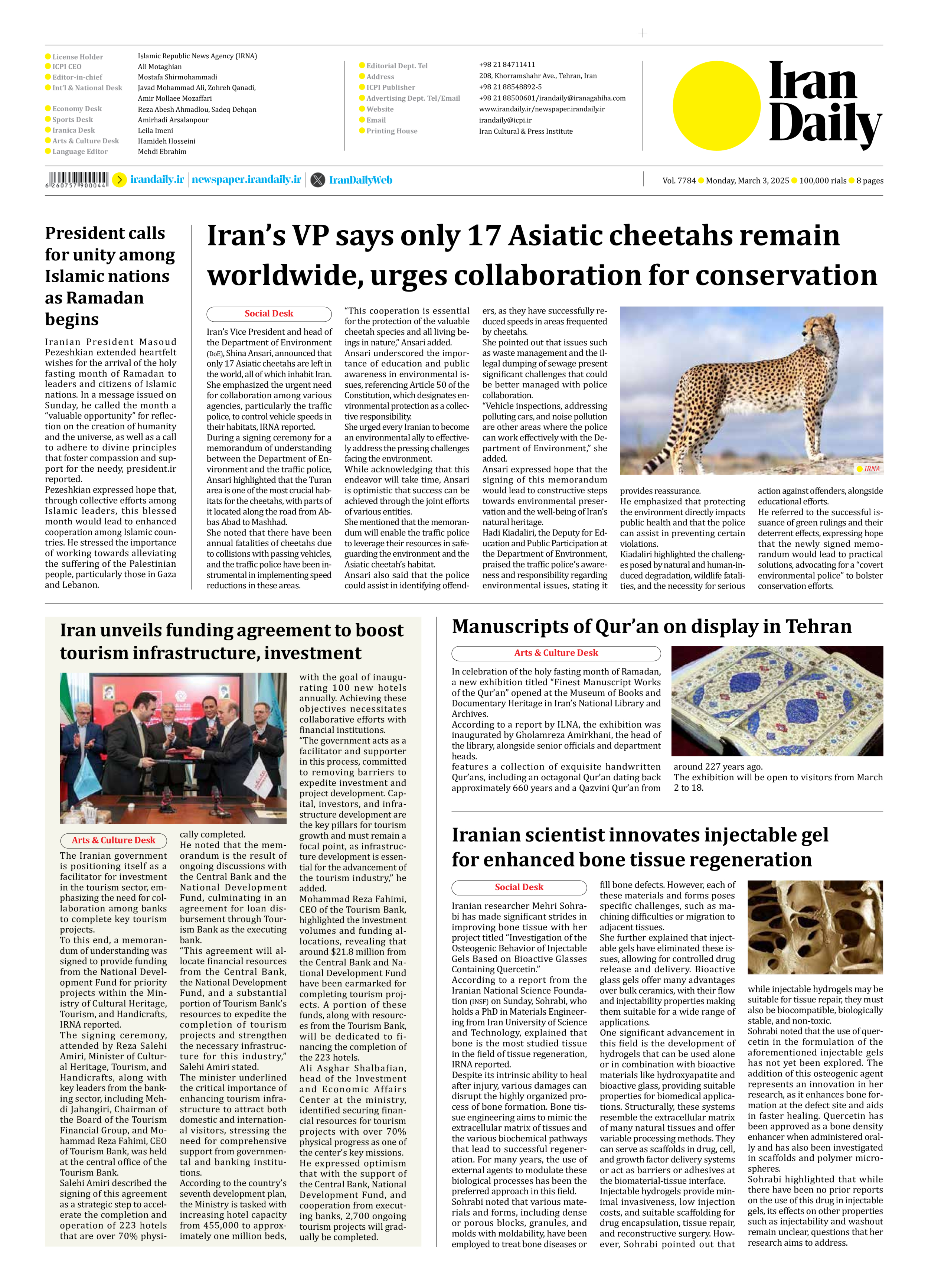
Iranian scientist innovates injectable gel for enhanced bone tissue regeneration
Iranian researcher Mehri Sohrabi has made significant strides in improving bone tissue with her project titled “Investigation of the Osteogenic Behavior of Injectable Gels Based on Bioactive Glasses Containing Quercetin.”
According to a report from the Iranian National Science Foundation (INSF) on Sunday, Sohrabi, who holds a PhD in Materials Engineering from Iran University of Science and Technology, explained that bone is the most studied tissue in the field of tissue regeneration, IRNA reported.
Despite its intrinsic ability to heal after injury, various damages can disrupt the highly organized process of bone formation. Bone tissue engineering aims to mimic the extracellular matrix of tissues and the various biochemical pathways that lead to successful regeneration. For many years, the use of external agents to modulate these biological processes has been the preferred approach in this field.
Sohrabi noted that various materials and forms, including dense or porous blocks, granules, and molds with moldability, have been employed to treat bone diseases or fill bone defects. However, each of these materials and forms poses specific challenges, such as machining difficulties or migration to adjacent tissues.
She further explained that injectable gels have eliminated these issues, allowing for controlled drug release and delivery. Bioactive glass gels offer many advantages over bulk ceramics, with their flow and injectability properties making them suitable for a wide range of applications.
One significant advancement in this field is the development of hydrogels that can be used alone or in combination with bioactive materials like hydroxyapatite and bioactive glass, providing suitable properties for biomedical applications. Structurally, these systems resemble the extracellular matrix of many natural tissues and offer variable processing methods. They can serve as scaffolds in drug, cell, and growth factor delivery systems or act as barriers or adhesives at the biomaterial-tissue interface.
Injectable hydrogels provide minimal invasiveness, low injection costs, and suitable scaffolding for drug encapsulation, tissue repair, and reconstructive surgery. However, Sohrabi pointed out that while injectable hydrogels may be suitable for tissue repair, they must also be biocompatible, biologically stable, and non-toxic.
Sohrabi noted that the use of quercetin in the formulation of the aforementioned injectable gels has not yet been explored. The addition of this osteogenic agent represents an innovation in her research, as it enhances bone formation at the defect site and aids in faster healing. Quercetin has been approved as a bone density enhancer when administered orally and has also been investigated in scaffolds and polymer microspheres.
Sohrabi highlighted that while there have been no prior reports on the use of this drug in injectable gels, its effects on other properties such as injectability and washout remain unclear, questions that her research aims to address.







